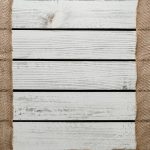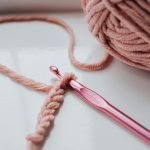Are you curious about cambric cotton fabric? You’ll find all the information you need right here.
In this article, we’ll delve into the history, characteristics, manufacturing process, and various uses of cambric cotton. We’ll also provide tips for caring and maintaining this delicate fabric.
Plus, we’ll explore alternative options if cambric cotton doesn’t quite meet your needs. So, whether you’re a fashion enthusiast or simply interested in textiles, let’s dive into the world of cambric cotton.
Table of Contents
History of Cambric Cotton Fabric
Cambric cotton fabric has a long history, dating back to the 16th century. The invention of cambric cotton is attributed to the Dutch, who were known for their mastery of textile production during that time. They developed a weaving technique that produced a fine, lightweight fabric with a smooth texture, perfect for clothing and household items.
Cambric cotton quickly gained popularity, becoming a staple in European fashion. Its delicate nature and soft feel made it a favorite among the aristocracy. The fabric was often used to create elegant dresses, blouses, and undergarments, showcasing the wearer’s wealth and taste.
Beyond its use in fashion, cambric fabric also held cultural significance. In some cultures, cambric was used to make burial shrouds, symbolizing purity and respect for the deceased. Its white color and fine texture were seen as a way to honor the departed.
Today, cambric cotton continues to be valued for its versatility and quality. It is still used in the production of high-end clothing and luxury linens. Its history and cultural significance have made it an enduring fabric that reflects both tradition and refinement.
Characteristics and Properties of Cambric Cotton
You’ll notice that cambric has a smooth texture and is often used for lightweight garments and linens. It is a finely woven cotton fabric that offers several properties and benefits. Here is a table highlighting some of its key characteristics:
| Properties | Benefits |
|---|---|
| Lightweight | Perfect for warm weather clothing |
| Breathable | Allows air to circulate, keeping you cool |
| Soft and smooth | Provides comfort and a luxurious feel |
| Durable | Withstands regular wear and tear |
The lightweight nature of cambric makes it an excellent choice for garments like summer dresses, blouses, and shirts. Its breathability allows air to flow through the fabric, keeping you cool and comfortable in hot climates. Additionally, the soft and smooth texture of cambric provides a pleasant sensation against the skin. It is also known for its durability, ensuring that your garments made from cambric will last a long time.
Manufacturing Process of Cambric Cotton
When manufacturing cambric, you carefully weave the cotton fibers together to create a lightweight and breathable fabric. Production techniques play a crucial role in ensuring the quality of the final product.
The process begins with selecting high-quality cotton fibers that are then cleaned and carded to remove impurities and align the fibers. Next, the carded fibers are spun into yarn, which is then woven on specialized looms. These looms create a tight and even weave, resulting in the characteristic smooth texture of cambric cotton.
Throughout the manufacturing process, strict quality control measures are implemented to ensure that the fabric meets the desired standards. This includes regular inspections and testing of the cotton fibers, yarn, and finished fabric for strength, durability, color fastness, and shrinkage. Any defects or inconsistencies are identified and rectified to maintain the high quality of the cambric cotton.
Once the fabric is woven, it undergoes finishing processes such as bleaching, dyeing, and printing to enhance its appearance and performance. The final product is then carefully inspected again before being packaged and distributed to customers.
Different Uses and Applications of Cambric Cotton
For a versatile and durable material, cambric cotton can be used in a variety of applications. Its fine weave and soft texture make it a popular choice for many different uses. Here are some ways cambric cotton can be incorporated into your daily life:
-
Clothing: Cambric cotton is commonly used in the fashion industry to create lightweight and breathable clothing. Its smooth surface allows for vibrant and long-lasting colors, making it ideal for creating stylish and comfortable garments.
-
Upholstery: Due to its durable nature, cambric cotton is often used as a lining material for upholstered furniture. It helps to protect the inner layers and provide a smooth finish to the upholstery. Additionally, cambric cotton can be used as a fabric cover for cushions and pillows, adding a touch of elegance to your home decor.
-
Medical Supplies: Cambric cotton is also utilized in the production of medical supplies such as bandages and dressings. Its absorbent properties make it suitable for wound care, while its softness ensures comfort for patients.
-
Home Decor: With cambric cotton, you can elevate your home decor. It can be used to create curtains, tablecloths, and napkins, adding a touch of sophistication to your living space. The different colors of cambric cotton allow for endless possibilities in matching your desired aesthetic.
Care and Maintenance Tips for Cambric Cotton Fabric
When it comes to caring for your cambric fabric, there are a few key points to keep in mind.
Firstly, when washing cambric, it is best to use cold water and a gentle detergent to avoid any damage.
Secondly, if you encounter stains on your cambric, treat them immediately with a stain remover that is safe for delicate fabrics.
Lastly, when it comes to ironing cambric, use a low heat setting and iron on the reverse side to prevent any potential damage.
Washing Cambric Fabric
To prevent shrinking, it’s important to follow the care instructions when washing cambric fabric. Here are some washing instructions and drying methods to ensure the longevity of your cambric fabric:
-
Washing Instructions:
-
Machine wash on a gentle cycle with cold water.
-
Use a mild detergent specifically designed for delicate fabrics.
-
Drying Methods:
-
Air dry your cambric fabric by laying it flat on a clean surface.
-
Avoid wringing or twisting the fabric, as it can cause damage.
By following these simple steps, you can maintain the quality and appearance of your cambric fabric. Taking care of your fabric will not only prevent shrinking, but also keep it looking fresh and vibrant for a long time.
Removing Stains From Cambric
If you spill something on your cambric, gently blot the stain with a clean cloth to avoid spreading it further.
Removing stains from cambric can be a delicate process, but with the right techniques, you can restore your fabric to its original condition.
First, identify the type of stain you are dealing with. For food stains, scrape off any excess material and then apply a mild detergent solution to the area.
Gently rub the fabric with a clean cloth, working from the outside of the stain towards the center. Rinse with cold water and repeat if necessary.
For oil-based stains, sprinkle some talcum powder or cornstarch onto the stain to absorb the oil. Let it sit for a few minutes before brushing it off and treating the area with a mild soap solution.
Always remember to test any cleaning method on a small, inconspicuous area of the fabric before proceeding.
With proper care and attention, you can maintain the beauty of your cambric fabric for years to come.
Ironing Cambric Fabric
You can achieve a smooth, wrinkle-free finish on your cambric by using a medium heat setting on your iron.
To prevent wrinkles, start by laying your cambric fabric on an ironing board, making sure it is flat and free from any folds or creases.
Gently press the iron onto the fabric, moving it in a back and forth motion. Avoid applying too much pressure as it can stretch or distort the delicate fabric.
It is important to iron the fabric while it is still slightly damp, as this helps to relax the fibers and make them easier to smooth out.
For best results, iron the cambric fabric on the wrong side, as this will protect the delicate surface and prevent any shine or scorch marks.
Remember to always read and follow the care instructions provided by the manufacturer to ensure the longevity of your cambric fabric.
Exploring Variations and Alternatives to Cambric Cotton
Consider trying out different types of cotton fabrics that can serve as variations or alternatives to cambric.
There are several benefits to exploring these alternatives.
One option is lawn fabric, which is lightweight and breathable, making it perfect for warm weather. Lawn fabric is known for its softness and smoothness, making it a comfortable choice for clothing and bedding.
Another option is voile fabric, which is slightly sheer and has a crisp texture. Voile is often used for curtains and clothing due to its elegant drape and delicate appearance.
Another alternative is muslin fabric, which is lightweight and durable. Muslin is often used for clothing, quilts, and even culinary purposes like cheesemaking. It is versatile and can be dyed or printed easily, allowing for endless creative possibilities.
Lastly, consider batiste fabric, which is lightweight and slightly opaque. Batiste is often used for blouses, dresses, and baby clothing due to its softness and breathability.
Exploring these alternatives to cambric will open up a world of possibilities for your sewing projects and ensure that you find the perfect fabric for your needs.
Conclusion
In conclusion, cambric cotton fabric is a versatile and durable material that has been used for centuries. Its history, characteristics, and manufacturing process make it a popular choice for various applications.
Taking proper care of cambric cotton will ensure its longevity and maintain its quality.
Lastly, while cambric cotton is a great option, there are also alternative fabrics available that offer similar properties and can be explored for different needs and preferences.
- How Does Ring Spun Cotton Affect Garment Fit and Shape Retention? - August 13, 2024
- What Are the Challenges in Producing Ring Spun Cotton? - August 13, 2024
- Is Ring Spun Cotton Suitable for Plus-Size Clothing? - August 13, 2024






